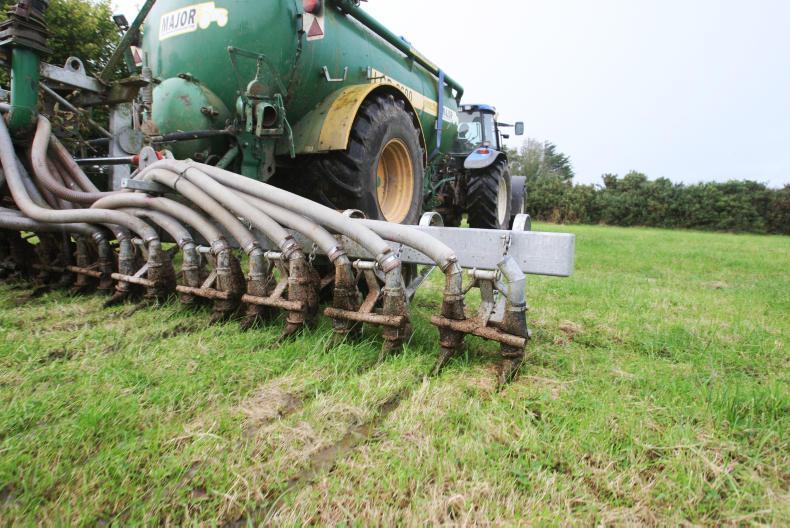Proposals on how to cut ammonia emissions from NI farms will be published by DAERA in the coming weeks, Agriculture Minister Edwin Poots has confirmed.
Speaking at Stormont on Tuesday, Minister Poots said his ammonia strategy will go out to public consultation before the next Assembly election, which is scheduled for 5 May 2022.
“The draft strategy will propose a series of farm measures to reduce ammonia, conservation actions to improve the condition of habitats and a revised operational protocol for the assessment of air pollution effects,” he told MLAs.
Minister Poots said the strategy will also “build on the significant support” that has been provided for low-emission slurry spreading equipment (LESSE) through the Tier 1 capital grant scheme.
New research from the Agri Food and Biosciences Institute has found that a 21% reduction in ammonia emissions could be delivered in NI at an annual cost of £6.6m
The Lagan Valley MLA suggested that the Tier 1 scheme could deliver a 25% cut in ammonia emissions, and an overall reduction of 43% could be achieved through a range of other measures.
However, these measures are likely to come at a substantial cost to local farmers.
New research from the Agri Food and Biosciences Institute (AFBI) has found that a 21% reduction in ammonia emissions could be delivered in NI at an annual cost of £6.6m.
This is based on five measures, namely extending the grazing season of all cattle by two weeks, using low crude protein diets for livestock, spreading all slurry with LESSE, banning non-protected urea fertiliser, and genetic improvement in livestock to lower nitrogen excretion.
The AFBI researchers state that “a broader suite of 11 ammonia mitigation measures” have been identified, but some of these are “relatively expensive” and “capital- intensive” options.
Cost
These measures would cost £43.7m per year and would deliver a 28% reduction in ammonia emissions.
It includes slurry acidification, ammonia scrubbers in pig and poultry houses, slurry store covers and slat mats for cattle.
Minister Poots appears to be in favour of capital investments to cut ammonia, as he described the refusal of planning applications that aim to deliver lower emissions on farms as “clearly illogical”.
“Advice has also come to us from universities that our means of measuring ammonia have been surpassed and that there are better measurements for ammonia. That indicates that our current measurements are on the high side,” he told MLAs.






 This is a subscriber-only article
This is a subscriber-only article










SHARING OPTIONS: